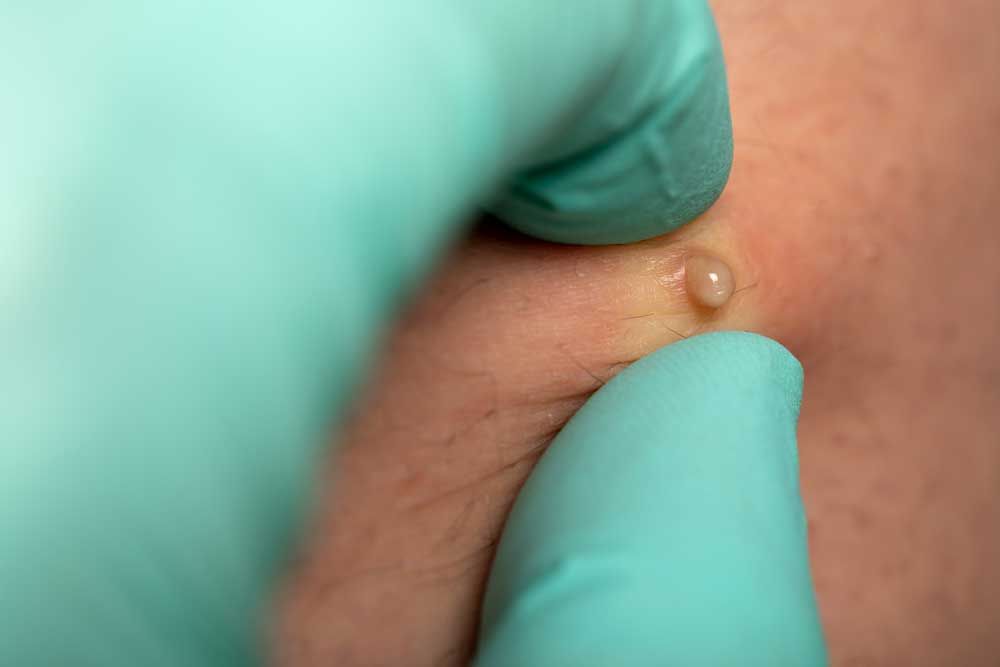
By Bradley J. Irish
Halloween is a time to embrace all that is disgusting, from bloody slasher films to haunted houses full of fake guts and gore.
But the attraction to stuff that grosses us out goes beyond this annual holiday.
Flip through TV channels and you’ll come across “adventurous eating” programs, in which hosts and contestants are served all manner of stomach-clenching foods; reality shows that take a deep dive into the work of pimple-popping dermatologists; and gross-out comedies that deploy tasteless humor – think vomiting and urination – to make viewers laugh.
You can see this in other forms of media, as well. In romance novels, for example, you can find portrayals of consensual sibling incest that are designed to titillate the reader. And, most extreme of all, there are internet shock sites that host real footage of death and dismemberment for those who want to seek it out.
It isn’t just a recent media phenomenon, either. Early modern England has a similar culture of disgust, which I’ve written about in a forthcoming book.
Why are so many people drawn to things that should, by all rights, compel them to turn away in horror? Modern science has an answer, and it has everything to do with how the emotion of disgust fundamentally works.
What is disgust?
Disgust is fundamentally an emotion of avoidance: It signals that something might be harmful to your body, and encourages you to avoid it.
Scientists believe that disgust originally concerned food; Charles Darwin noted “how readily this feeling is excited by anything unusual in the appearance, odour, or nature of our food.” According to this theory, it slowly evolved to guard over all sorts of things that might put you in contact with dangerous pathogens, whether via disease, animals, bodily injury, corpses or sex.
What’s more, disgust seems to have evolved further to regulate things that are symbolically harmful: violations of morals, cultural rules and cherished values. This is why some people might say they’re “disgusted” by an act of racism.
Because of these regulatory functions, disgust is often known as the “gatekeeper emotion,” the “exclusionary emotion” or the “body and soul emotion.”
The allure of disgust
How, then, do we account for the fact that disgusting things can sometimes captivate us?
Psychological research suggests that disgusting stimuli both capture and retain your attention more effectively than emotionally neutral stimuli do.
According to media scholars Bridget Rubenking and Annie Lang, this likely happens because, from an evolutionary perspective, it seems that “an attentional bias toward disgust – no matter how aversive – would better equip humans to avoid harmful substances.” So although disgust can be an unpleasant feeling, the emotion has evolved to simultaneously seize people’s attention.
But disgusting things don’t just capture your attention; you can even enjoy them.
Psychologist Nina Strohminger suggests that the pleasurable features of disgust may be an instance of what has been called “benign masochism” – the human tendency to seek out seemingly “negative” experiences for the purposes of enjoying “constrained risks,” such as riding a roller coaster or eating extremely spicy foods.
According to Strohminger, it seems “possible that any negative feeling has the potential to be enjoyable when it is stripped of the belief that what is happening is actually bad, leaving behind physiological arousal that is, in itself, exhilarating or interesting.”
So not only are you predisposed to be captivated by disgusting things, there’s also a psychological mechanism that enables you, in the right circumstances, to enjoy them.
Shakespearean disgust
Celebrating and profiting off this attraction isn’t a product of the digital age. It was even happening in Shakespeare’s time.
The playwright’s notorious tragedy “Titus Andronicus” contains as much gore as today’s slasher movies. According to one estimate, the play stages “14 killings, 9 of them on stage, 6 severed members, 1 rape (or 2 or 3, depending on how you count), 1 live burial, 1 case of insanity, and 1 of cannibalism – an average of 5.2 atrocities per act, or one for every 97 lines.”
When exploring the “problematic appeal of this play’s violence,” literary critic Cynthia Marshall asks, “Why would an audience, any audience, enjoy Titus’s reiteration of violence against the human body?”

Broadway World
The answer, I believe, owes to the alluring nature of disgust that psychologists have documented. In early modern England, in fact, there was a cottage industry of disgust.
Large crowds viewed public executions, and the corpses of criminals were left hanged by chains for the public to gawk at. In open anatomy theaters, curious onlookers could watch doctors perform autopsies. In their shops, apothecaries displayed dismembered human body parts, before eventually mixing them into medicines – a practice scholars today call “medicinal cannibalism.”
And it is not simply that Elizabethans were desensitized, possessed of a different threshold for disgust. Contemporaries expressed their revulsion, even as they found themselves drawn to them. After seeing a charred body hanging in a merchant’s warehouse, the diarist Samuel Pepys noted that “it pleased me much, though an ill sight.”
Then, as now, disgusting things captivate our attention and can even give us enjoyment – and the horrors of a play like “Titus Andronicus” reflect the fact that Elizabethans lived in a culture that encouraged people to gaze upon disgusting objects, even as they felt the urge to turn away. Shakespeare’s audience, I think, embraced the repulsive pleasure, just as modern audiences do when viewing the latest film in the “Halloween” franchise.
The human emotion that shields you from harm equally allows you to take a perverse pleasure in the very things from which you need to be protected.
![]()
Bradley J. Irish is Associate Professor of English, Arizona State University.





























Gary Flamingo says
Maybe we are missing the boat here. Merge Halloween with the transvestite movement. It s the time of year we pretend to be something we are not. At least then everybody gets some candy.
Jimbo99 says
I always thought it was more about the candy industry creating more dental bills. The stickier the candy the sooner the dental fillings for cavities come loose. It’s a time bomb that happens, expensive penny candy. YOLO though.